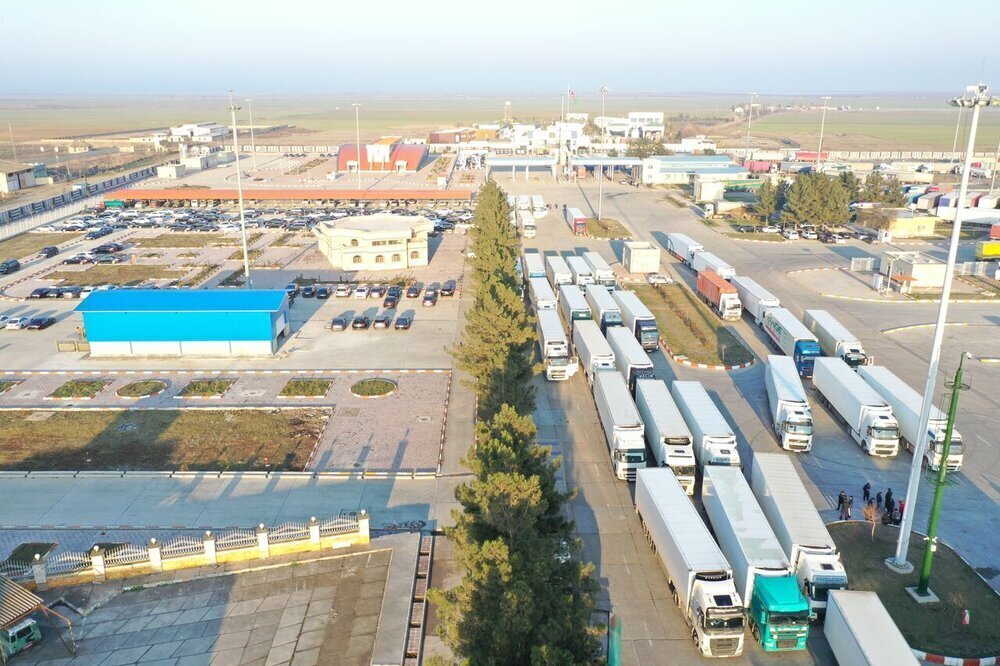Non-oil export from Markazi province up 39% in 9 months on year

TEHRAN- The value of non-oil export from Markazi province, in the center of Iran, rose 39 percent in the first nine months of the current Iranian calendar year (March 20 - December 21, 2024), as compared to the same period of time in the past year, the director-general of the province’s customs department announced.
Ruhollah Gholami said that 1.734 million tons of commodities worth $1.187 billion were exported from the province in the nine-month period, indicating 25 percent growth in terms of weight as well.
He named Afghanistan, Iraq, Pakistan, Turkey, the United Arab Emirates (UAE), Uzbekistan, Turkmenistan, Armenia, Russia, and the Netherlands as the main destinations of the goods exported from the province in the mentioned time span.
The official also announced that 294,000 tons of goods valued at $826 million were imported to the province in the first nine months of the present year, with 18 percent rise in value, and 22 percent growth in terms of weight, as compared to the same period of time in the previous year.
He named the UAE, China, Turkey, Hong Kong, Qatar, Italy, Germany, Iraq, India and Switzerland as the main sources of products imported into the country in the nine-month period.
As previously announced by the head of the Islamic Republic of Iran Customs Administration (IRICA), Iran's non-oil exports rose 18 percent in the first nine months of the Iranian calendar year to $43.14 billion.
Foroud Asgari said imports during the mentioned period, including gold bullion, amounted to $50.89 billion. The weight of imports declined by 3.16 percent to 27.94 million tons, he added.
Non-oil export volume reached 116.35 million tons in the nine-month period, a 13.77 percent increase from the previous year, Asgari noted. The average customs value per ton of exported goods rose 3.74 percent to $371.
Petrochemical exports accounted for 50.7 million tons, valued at $19.7 billion, representing a 33.25 percent increase in volume and a 32 percent rise in value year-on-year.
China remained Iran's top export destination, purchasing $11 billion worth of goods. Iraq followed with $9.4 billion, the UAE with $5.3 billion, Turkey with $5.2 billion, Afghanistan and Pakistan with $1.7 billion each, and India with $1.4 billion. Together, these seven countries accounted for 82.4 percent of the total export volume and 82.85 percent of export value.
The UAE topped the list of Iran’s import partners, exporting $15.3 billion worth of goods to Iran. China followed with $13 billion, Turkey with $8.9 billion, Germany with $1.8 billion, India and Russia with $1.1 billion each, and Hong Kong with $1 billion. These seven countries supplied 75 percent of the import volume and 83 percent of import value during the period.
The average customs value per ton of imported goods rose 8.4 percent to $1,821.
Natural gas in liquid form led the export list at $6 billion, followed by liquefied propane at $2.5 billion and methanol at $1.9 billion. Key imports included raw gold at $5.6 billion, livestock corn at $2.1 billion, and smartphones at $1.7 billion.
Asgari, who also serves as deputy economy minister, emphasized the role of trade in bolstering the national economy amid ongoing international sanctions.
The 11th session of the Supreme Council for the Development of Non-Oil Exports was held after a four-year hiatus, with the participation of Iran's first vice president on January 1.
In an exclusive interview with IRIB, Alireza Dehghan Dehnavi, head of Iran’s Trade Promotion Organization (TPO), highlighted the significance of this council, which had been inactive for nearly four years.
He noted that the council had played a key role in national decision-making processes before falling into disuse.
Dehnavi explained that the revival of the council was prompted during this year’s National Export Day event, where Masoud Pezeshkian instructed its reactivation.
With the efforts of the government and the support of the first vice president and the minister of industry, mining, and trade, the groundwork for the council’s return was laid, culminating in its 11th session.
The session, chaired by First Vice President Mohammad Reza Aref, brought together all council members to discuss pressing trade issues. The meeting focused on three main areas:
The council reviewed the statistical performance of the country’s non-oil exports. Dehnavi acknowledged that Iran’s non-oil trade balance has been negative in recent years, with a $17 million deficit recorded last year despite a positive overall trade balance. The Vice President tasked the TPOI with reversing this trend by boosting non-oil exports.
The council identified several obstacles hindering foreign trade, including excessive regulations, insufficient infrastructure for exports (such as transportation and customs facilities), and challenges in export-related policies.
Dehnavi emphasized the need to align monetary and trade policies, as the former has often overshadowed the latter. The council resolved to reform trade policies to address these issues.
Several proposals were approved, including holding regular council sessions and establishing provincial export development task forces led by governors. These initiatives aim to make export promotion a nationwide campaign.
The council also discussed a strategic roadmap for free trade zones, aiming to transform these areas into export hubs. The TPO is preparing this document with council support.
Additionally, collaboration with the private sector was emphasized to identify and implement high-impact export projects.
Other topics included reforms in re-exports and temporary imports, with a task force comprising customs, agriculture, health, and trade organizations formed to streamline processes. The pricing of export goods at customs was also debated, with calls for a review to enhance coordination among export-related bodies.
The session concluded with plans to establish specialized commissions to maintain continuity between council meetings and ensure effective decision-making in foreign trade.
MA
